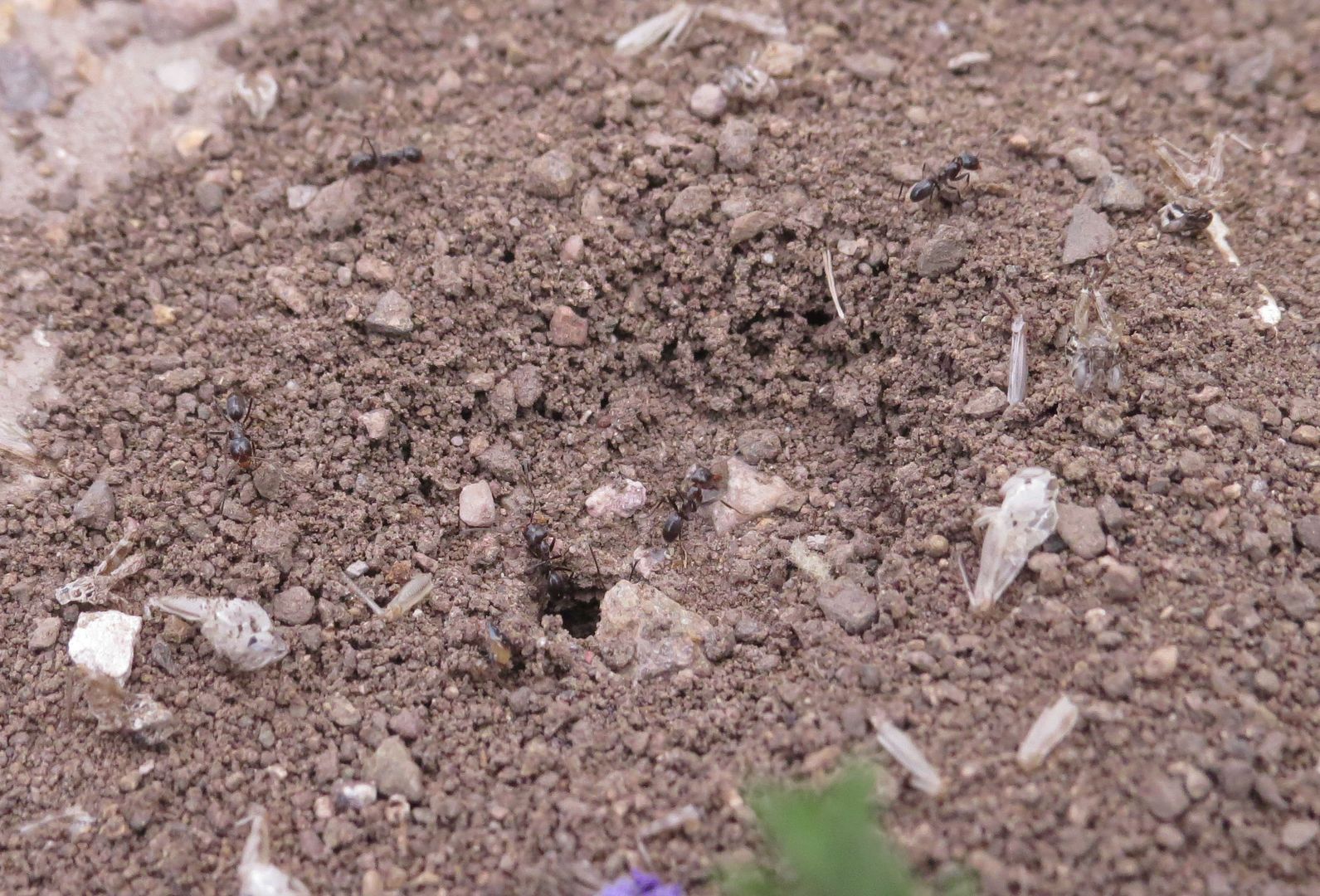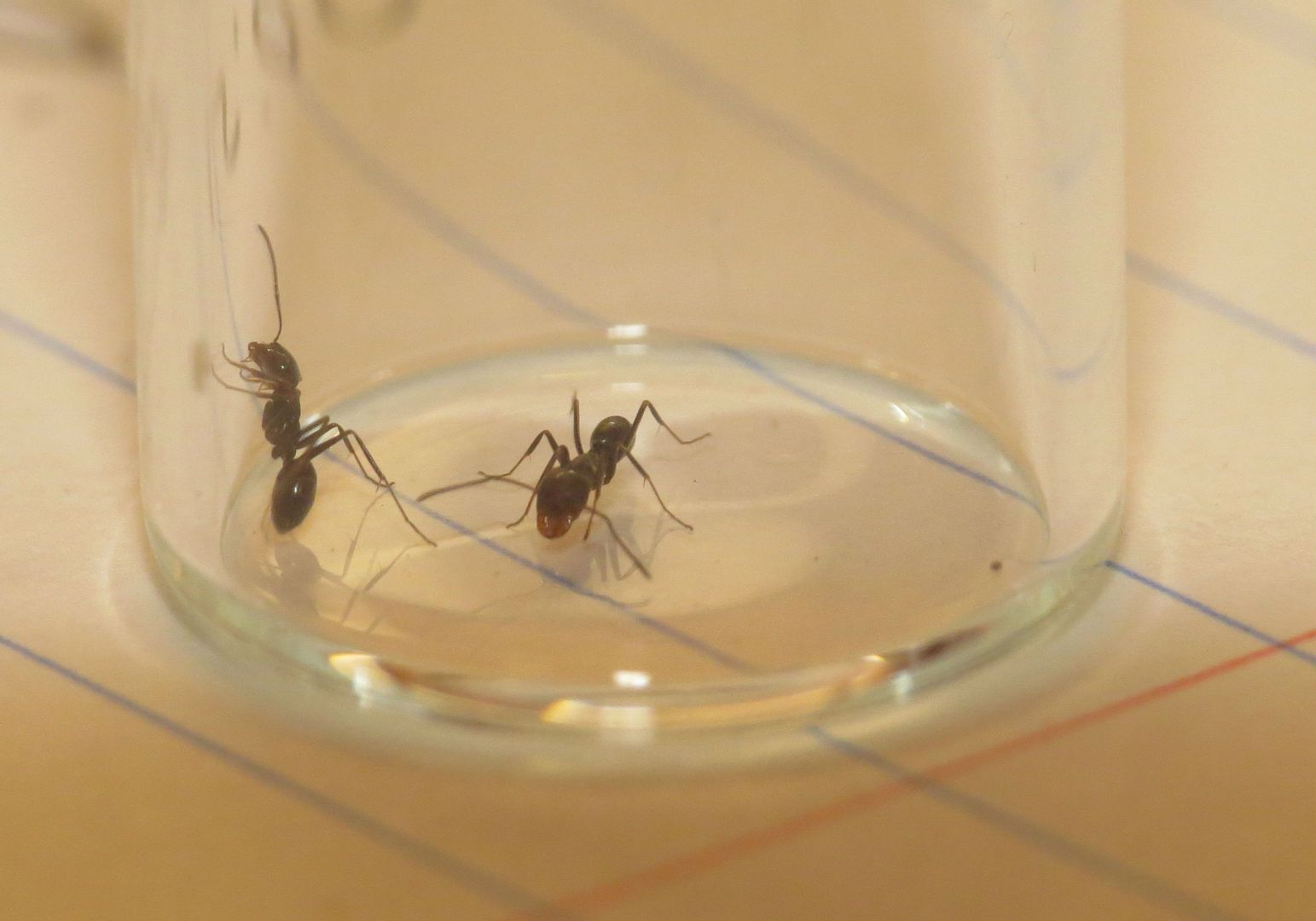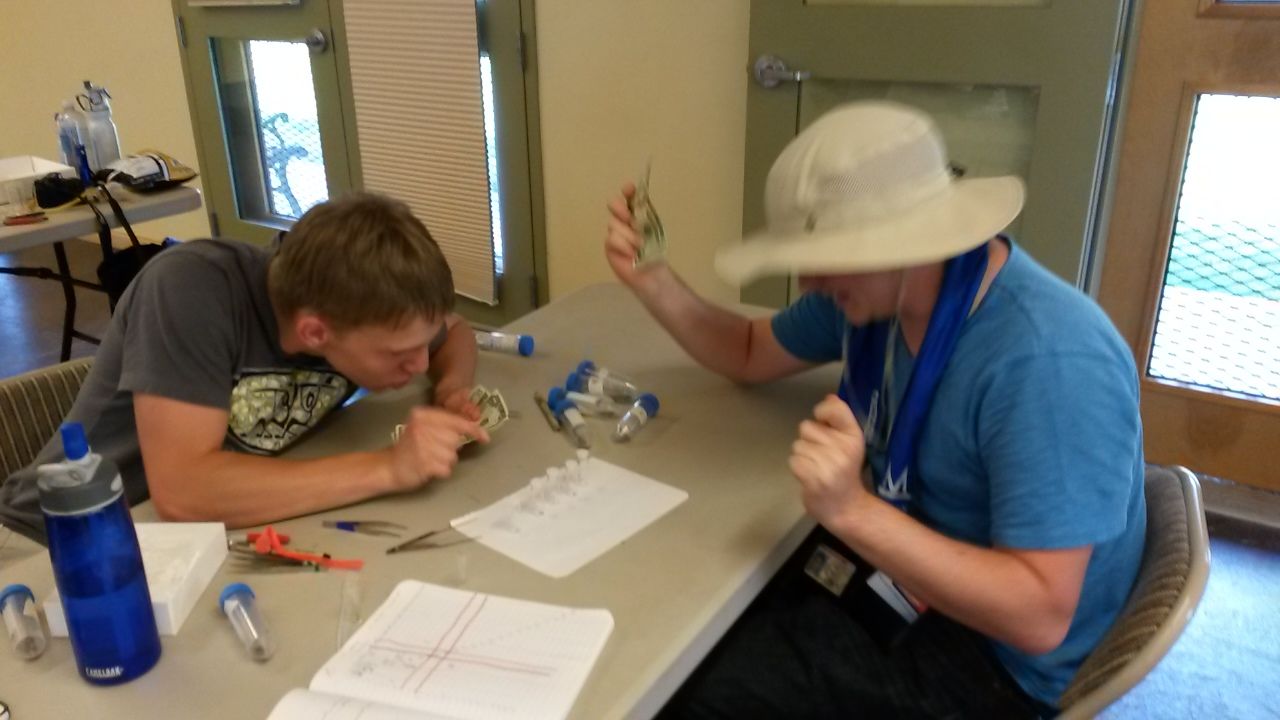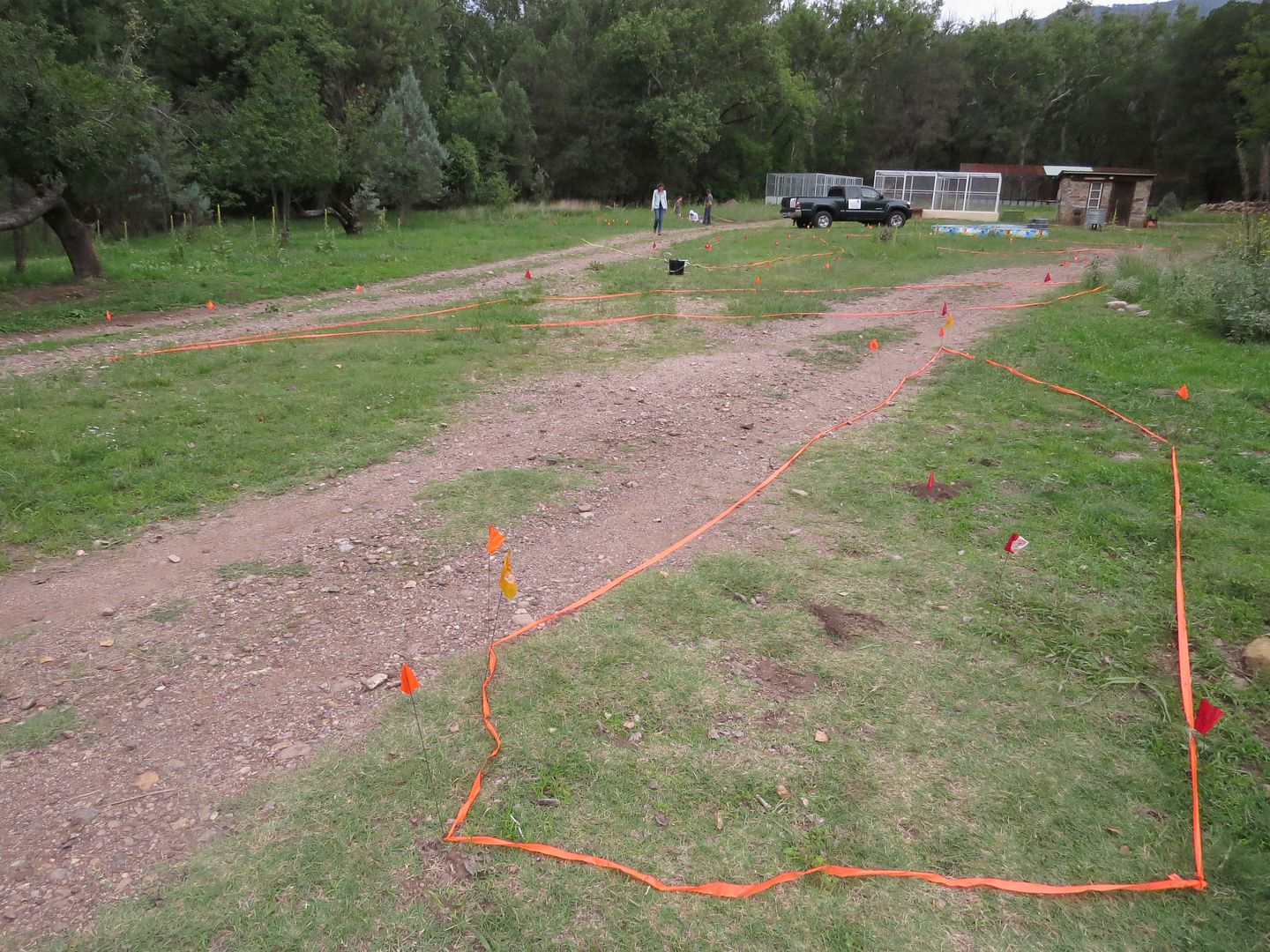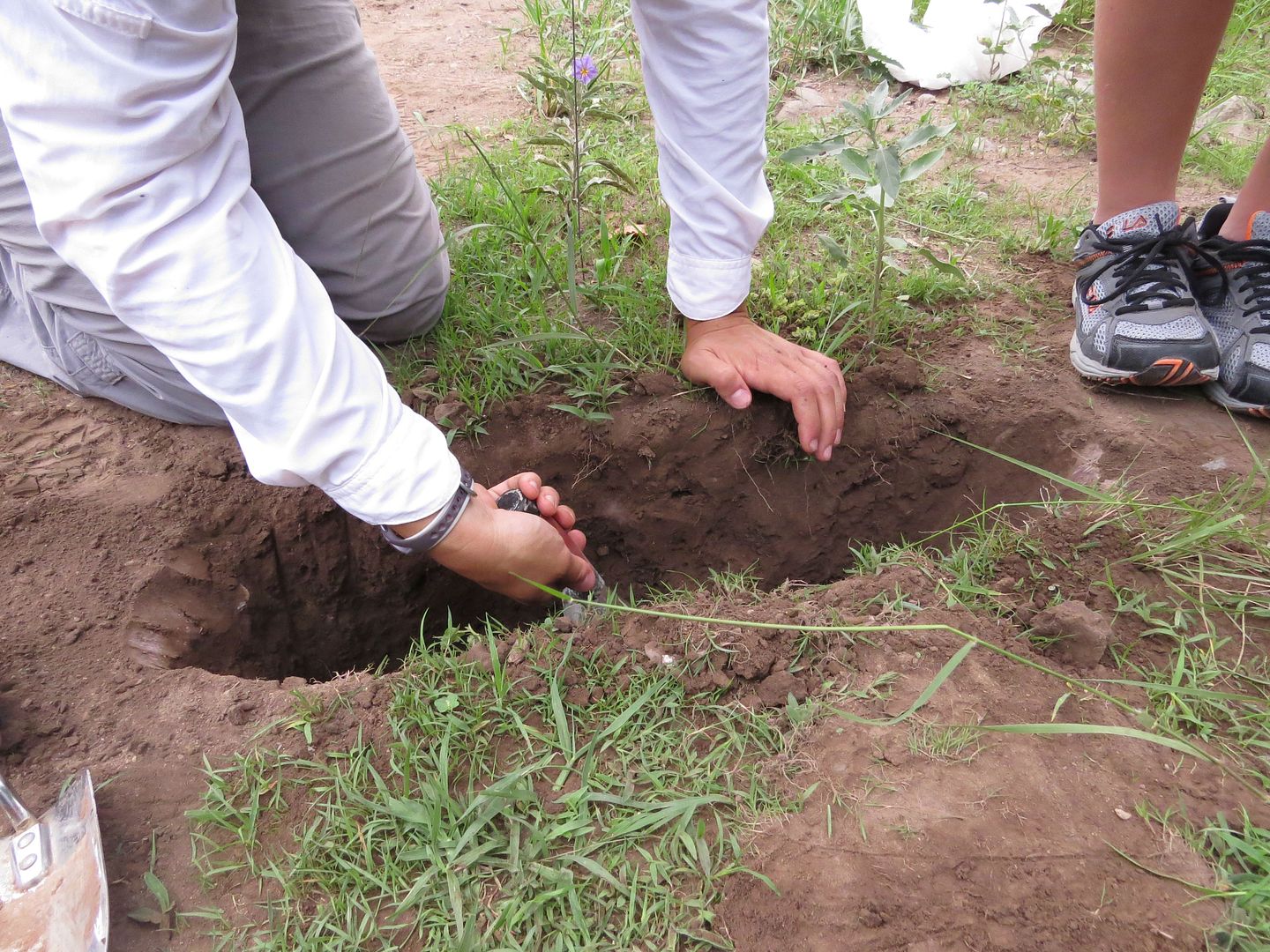Dorymyrmex, despite being a common genus, remains something of a mystery in North America. The trouble is that no one's really studied them well enough to get the genus right. Eastern species are fairly well known, but out west.... the genus is in pure chaos. Basically if it's black it keys out to Dorymyrmex insanus, and studies that look into the matter simply describe new species with a sentence or two.
The station we stayed at had loads of colonies of them on the property. We spent a day flagging each of them, and then putting sets of workers together to see if they got along or not.
Workers from the same colony got along, those from different one almost murdered on another on sight.
Though time consuming, it's fun work.
We found that the colonies had changed boundaries from the previous year, as well one of them had become massive in size (not in photo). Pictured above is a typical nest comprised of maybe 6 to 12 holes. The large colony crossed one of the trails here and was comprised of 26 holes.
We dug up one nest and found the general structure of one of their nests is simply one narrow tunnel leading down at a slight angle, leading through several galleries.
For time reasons we didn't get down below 3'. And it likely extends much deeper than that. Most of the ant nests in the area seem to go down 12' or so. How many queens they have, or if the ant hills are connected somehow underground are unknown. It's likely that these nests are not connected and there might be only one queen per hole, but also likely that in the winter the nests combine down into fewer holes. Perhaps queen number and or age help determine the number of satellite holes.
That was the extent of our study. Future courses may continue the work.
